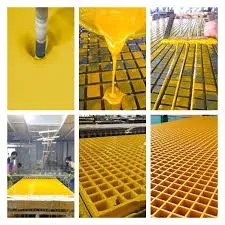
-
 Afrikaans
Afrikaans -
 Albanian
Albanian -
 Amharic
Amharic -
 Arabic
Arabic -
 Armenian
Armenian -
 Azerbaijani
Azerbaijani -
 Basque
Basque -
 Belarusian
Belarusian -
 Bengali
Bengali -
 Bosnian
Bosnian -
 Bulgarian
Bulgarian -
 Catalan
Catalan -
 Cebuano
Cebuano -
 China
China -
 China (Taiwan)
China (Taiwan) -
 Corsican
Corsican -
 Croatian
Croatian -
 Czech
Czech -
 Danish
Danish -
 Dutch
Dutch -
 English
English -
 Esperanto
Esperanto -
 Estonian
Estonian -
 Finnish
Finnish -
 French
French -
 Frisian
Frisian -
 Galician
Galician -
 Georgian
Georgian -
 German
German -
 Greek
Greek -
 Gujarati
Gujarati -
 Haitian Creole
Haitian Creole -
 hausa
hausa -
 hawaiian
hawaiian -
 Hebrew
Hebrew -
 Hindi
Hindi -
 Miao
Miao -
 Hungarian
Hungarian -
 Icelandic
Icelandic -
 igbo
igbo -
 Indonesian
Indonesian -
 irish
irish -
 Italian
Italian -
 Japanese
Japanese -
 Javanese
Javanese -
 Kannada
Kannada -
 kazakh
kazakh -
 Khmer
Khmer -
 Rwandese
Rwandese -
 Korean
Korean -
 Kurdish
Kurdish -
 Kyrgyz
Kyrgyz -
 Lao
Lao -
 Latin
Latin -
 Latvian
Latvian -
 Lithuanian
Lithuanian -
 Luxembourgish
Luxembourgish -
 Macedonian
Macedonian -
 Malgashi
Malgashi -
 Malay
Malay -
 Malayalam
Malayalam -
 Maltese
Maltese -
 Maori
Maori -
 Marathi
Marathi -
 Mongolian
Mongolian -
 Myanmar
Myanmar -
 Nepali
Nepali -
 Norwegian
Norwegian -
 Norwegian
Norwegian -
 Occitan
Occitan -
 Pashto
Pashto -
 Persian
Persian -
 Polish
Polish -
 Portuguese
Portuguese -
 Punjabi
Punjabi -
 Romanian
Romanian -
 Russian
Russian -
 Samoan
Samoan -
 Scottish Gaelic
Scottish Gaelic -
 Serbian
Serbian -
 Sesotho
Sesotho -
 Shona
Shona -
 Sindhi
Sindhi -
 Sinhala
Sinhala -
 Slovak
Slovak -
 Slovenian
Slovenian -
 Somali
Somali -
 Spanish
Spanish -
 Sundanese
Sundanese -
 Swahili
Swahili -
 Swedish
Swedish -
 Tagalog
Tagalog -
 Tajik
Tajik -
 Tamil
Tamil -
 Tatar
Tatar -
 Telugu
Telugu -
 Thai
Thai -
 Turkish
Turkish -
 Turkmen
Turkmen -
 Ukrainian
Ukrainian -
 Urdu
Urdu -
 Uighur
Uighur -
 Uzbek
Uzbek -
 Vietnamese
Vietnamese -
 Welsh
Welsh -
 Bantu
Bantu -
 Yiddish
Yiddish -
 Yoruba
Yoruba -
 Zulu
Zulu
frp clarifier
Understanding FRP Clarifiers A Comprehensive Overview
In the realm of water treatment, the need for efficient and effective solutions has led to the evolution of various technologies. One of the notable advancements in this field is the use of Fiber Reinforced Polymer (FRP) clarifiers. These innovative structures have garnered attention due to their unique properties and numerous advantages over traditional clarification systems. In this article, we will delve into the intricacies of FRP clarifiers, exploring their design, applications, benefits, and overall significance in modern water treatment processes.
What is an FRP Clarifier?
FRP clarifiers are specialized units used in the process of settling and separating suspended solids from liquids, typically in wastewater treatment plants or industrial applications. Constructed from fiber-reinforced polymer, these clarifiers are designed to be lightweight, strong, and resistant to corrosion, making them an ideal choice for environments that are hostile to many traditional materials.
Design and Functionality
The design of an FRP clarifier usually incorporates a cylindrical or rectangular tank where the settling process occurs. The walls of the clarifier are made from layers of fiber-reinforced polymer, which provide structural integrity while minimizing weight. Inside the clarifier, mechanisms such as chain-driven scrapers or mechanical arms may be utilized to facilitate the continuous removal of the settled solids, thus enhancing the efficiency of the process.
FRP clarifiers often feature a weir system that helps maintain the desired water level within the tank, allowing for a consistent flow of liquid while minimizing turbulence that can resuspend settled particles. This design ensures that the clarification process is both effective and sustainable, contributing to the overall quality of the treated water.
Applications of FRP Clarifiers
FRP clarifiers are versatile and can be employed in various applications. They are widely used in municipal wastewater treatment plants for the removal of suspended solids and other impurities. Furthermore, they are increasingly being adopted in industrial settings, such as food processing, petrochemical facilities, and pulp and paper mills. In these industries, FRP clarifiers are utilized to manage process water and stormwater runoff, ensuring compliance with environmental regulations.
frp clarifier

In addition, due to their lightweight and corrosion-resistant properties, FRP clarifiers are ideal for applications in coastal and offshore environments, where traditional materials may deteriorate quickly.
Advantages of FRP Clarifiers
The adoption of FRP clarifiers comes with several significant advantages. One of the primary benefits is their lightweight nature, which simplifies transportation and installation. This feature can result in reduced construction costs and shorter project timelines. Moreover, the resistance to corrosion and chemical attack ensures a longer lifespan and lower maintenance costs compared to steel or concrete alternatives.
Energy efficiency is another key advantage. FRP clarifiers are often designed to operate at lower energy levels, contributing to overall operational cost savings. Additionally, many systems include features that optimize flow and enhance sedimentation, thereby improving the overall efficiency of the clarification process.
Lastly, FRP clarifiers offer flexibility in design and installation. They can be fabricated to meet specific site conditions and requirements, allowing for tailored solutions that align with the unique demands of each project.
Conclusion
In conclusion, FRP clarifiers represent a significant advancement in water treatment technology. Their lightweight, corrosion-resistant design makes them ideal for a wide range of applications in municipal and industrial settings. The benefits of efficiency, cost-effectiveness, and adaptability position FRP clarifiers as an essential component in the ongoing efforts to manage water resources sustainably.
As global water treatment needs continue to evolve, the role of FRP clarifiers will likely expand, helping to meet the challenges posed by increasing demand and regulatory standards. By embracing innovative technologies such as FRP clarifiers, industries and municipalities can take significant strides toward achieving cleaner, safer water for present and future generations.









